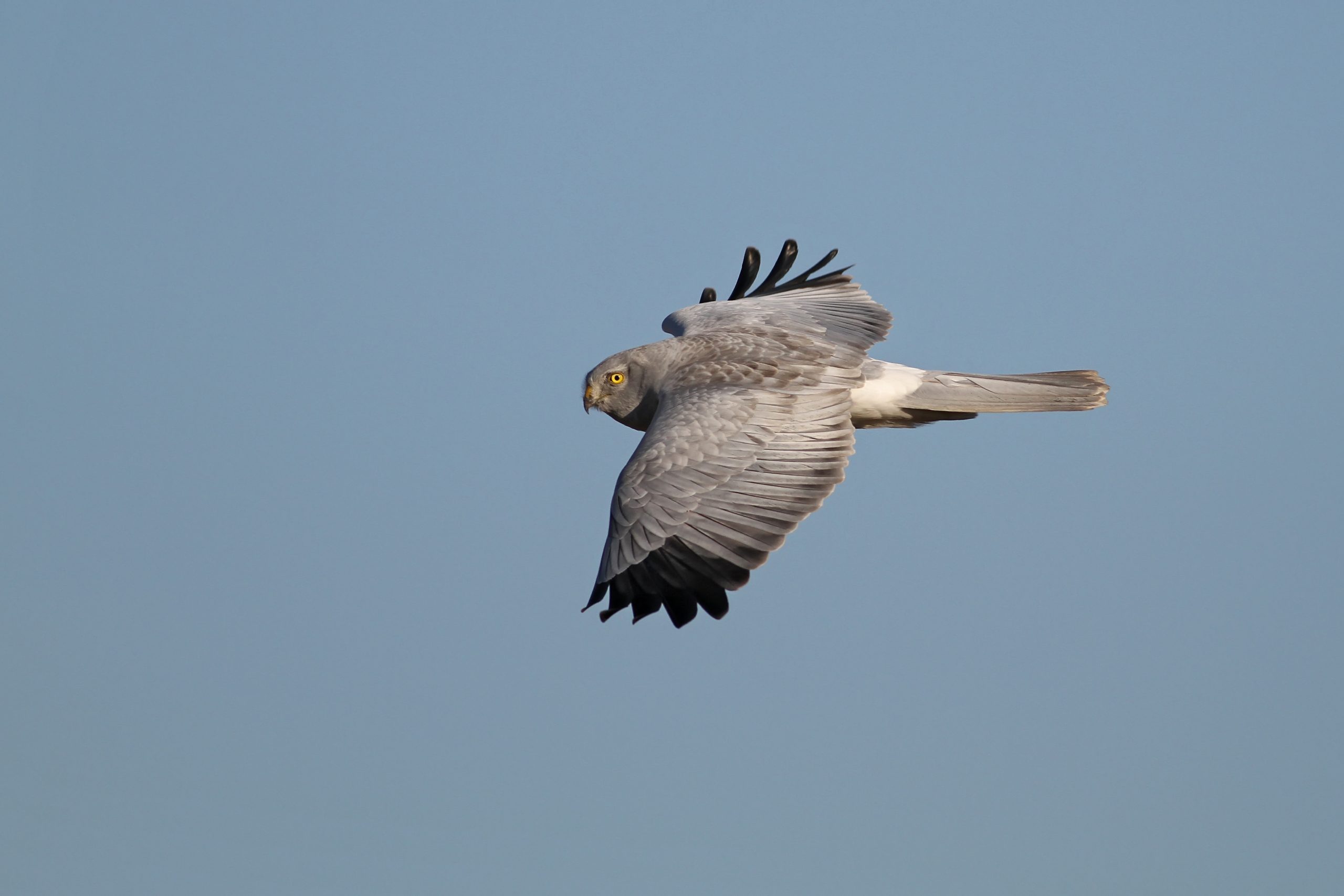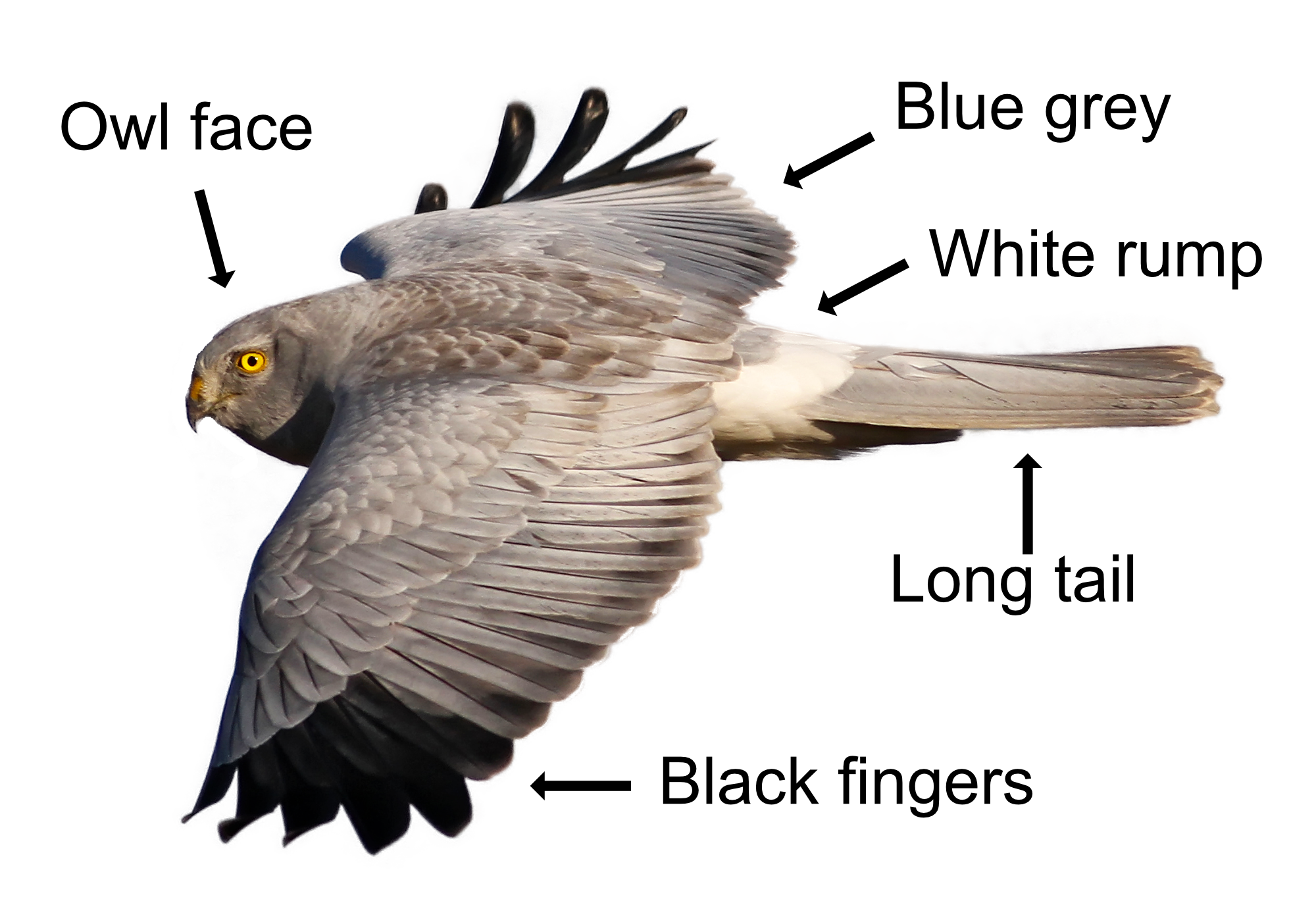
A male Hen Harrier elegantly flying, like a grey ghost, back and forth above a misty moorland is a sight that, once seen, is never forgotten. They are a hunter of the open uplands, keeping as far away from people as possible.
The Hen Harrier is a slender bird of prey, smaller than a Buzzard. The male is a ghostly blue-grey with long black, fingered wing tips, a long tail, a white rump (like a House Martin), and white underparts. Females are larger and dark brown. They have an owl-like appearance on their face. Their flight is buoyant and low, just one or two metres above the ground, as they quarter (zigzag) the ground for something to eat, holding their wings in a shallow V.

Hen Harriers use their ears as well as their eyes to find prey amongst the dense moorland vegetation. They eat small mammals and birds, making them the enemy of gamekeepers - who sometimes illegally kill them for eating their grouse and partridge chicks.
When courting, the male performs a spectacular sky dance, passing food to the female in the air or dropping it for her to catch. A male has a territory of more than a square kilometre and might have multiple partners. Where a male has mated with several females, all the nests tend to be close to one another as he is a bit lazy and doesn't want to go too far when delivering food to his ladies. Nesting begins in April and the nest is made of a pile of heather on the ground. The 4-6 eggs hatch after 30 days and are incubated by the female while the male brings things to eat. The eggs are laid one or two days apart so there is a noticeable age gap between the young. After two weeks the youngsters are big enough to be left on their own, and both parents hunt for food. They are able to fly 35 days later but stay with mum for several weeks to learn all about quartering. Hen Harriers are silent apart from when approaching a nest when they make a yikkering call.
There are 600 pairs of Hen Harriers in Britain and they are specially protected. Their number plummeted as a result of persecution in Victorian times and they were almost completely exterminated. They still face large threats from illegal persecution by gamekeepers and egg collectors. Planting of conifer forests on moorlands has also restricted the available habitat that they need. The Hen Harrier is partially migrant as northern birds move south and all birds leave their moorland breeding areas for lowland or coastal areas in winter where they may be joined by others from the continent. Large groups of Hen Harriers can gather in a single roost.
Their Latin name is 'circus cyaneus' where 'circus' is derived from Ancient Greek 'kirkos' for 'circle' which refers to a Hen Harrier's circling flight (and also where we get circus from as circus rings are traditionally round). The 'cyaneus' is Latin for 'dark-blue'. The English name Hen Harrier comes from the fact that they once used to hunt free-range hens! Female Hen Harriers are also known as 'ringtails' because of their distinctive tail banding.